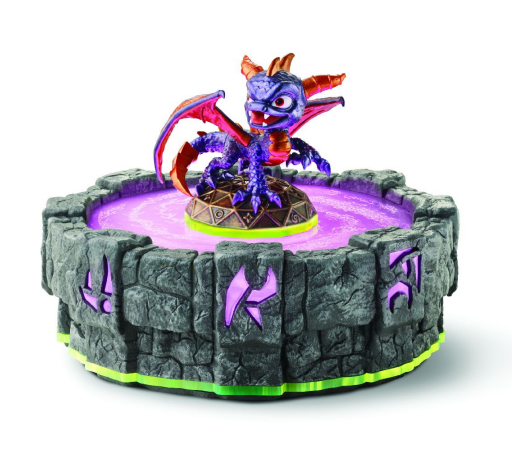By Joel Smart (The Cascade) – Email
Print Edition: November 16, 2011
It used to be that playing an adventure-based card game was primarily done in your mind, and that playing with action figures was an experience solely influenced by your imagination. However, with this current generation of consoles, both of those classic childhood pastimes have been incorporated into video games. Though it’s debatable how much these new games really change the dynamics of how kids play with toys on their own time, it’s an exceptional opportunity to imagine how this trend could develop into something more interactive and engaging moving forward.
Third-person action-adventure game Skylanders: Spyro’s Adventure is the latest to incorporate this type of mechanic. Children can use their various Skylanders action figure “heroes” and, using a special stand, transport them into the game as playable characters. These characters then develop experience-points and game-related info as they are played with in-game. What makes it interesting is that if a gamer takes the toy to a friend’s house to play, it remembers what they’ve done. It maintains the experience-points from all the times it has been played with before. This holds true whether you use the toy on the Wii, PC, PS3 or Xbox 360 versions of the game. Though the game comes with three characters to start, fans of the game can purchase over 30 different heroes. As someone who used to collect similar toys, the fun of searching through such a variety of characters and picking out a favourite one sounds to me like a great addition to a kid’s game. Each character has its own unique weapons and moves, so the experience of getting a new character really does change the way the game plays.
Card-based battle games—like Magic: The Gathering, Pokemon or Yu-Gi-Oh!—have become a staple in gaming over the years. These trading cards have generally stayed in the realm of the real world, with mock-battles of fantastical monsters taking place entirely in the heads of those playing the game together. However, shortly after the PlayStation Eye camera was released for the PlayStation 3 a game called The Eye of Judgment came out. In this game, real trading cards are laid down on a special gaming mat which is displayed on the TV by the camera; the otherwise-imagined battles then take place in a graphic spectacle on-screen. The game even takes care of all the details – measuring hit-points, mana-costs, winning-record, etc. Competitive matches could even be played online. Although the game was not a major success, the technology had a lot of potential. If combined with an already established trading-card franchise, it would likely be incredibly popular.
While neither of these examples make a huge impact on the way kids play with their toys, both showcase the way ordinary toys can have video game applications. Maybe an action figure will be able to learn what players do with it outside of the game, and subsequently have that bring experience points into the game. It doesn’t seem too far-fetched to imagine most kids’ toys coming with some kind of video gaming component. Add in the increasing prevalence of smart phones and the integration might not need to wait for kids to get home. If done incorrectly, it could limit the opportunities for children to be imaginative. But, done right, they might actually allow a child to further explore their creativity. Maybe their favourite toy could even pick up on the fact that they struggle with math, and help them see the fun side in it. That idea may seem like a stretch from a game like Skylanders, but chances are that it’s not that far off.


